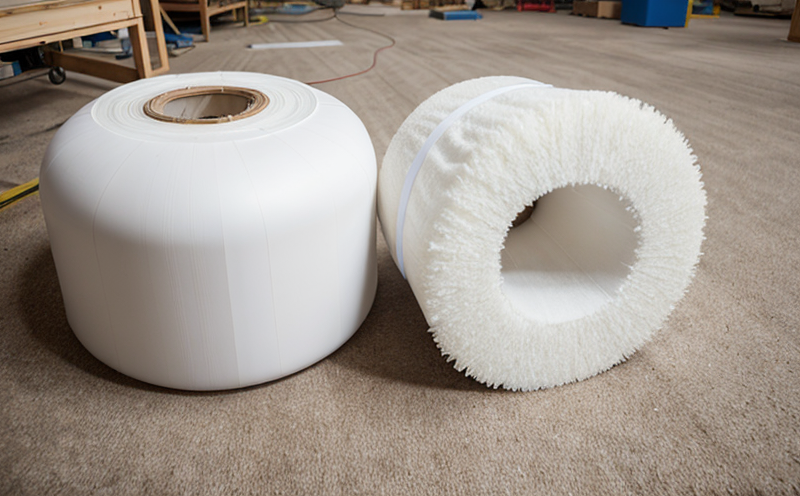ISO 10140-5 Sound Insulation of Windows Testing
The ISO 10140-5 standard provides a comprehensive framework for testing the sound insulation properties of windows. This test is crucial in ensuring that buildings meet noise reduction requirements, thereby enhancing occupant comfort and well-being. The standard applies to windows with or without secondary glazing, including casement, double-hung sash, sliding, fixed, and pivoted types.
The testing procedure involves measuring the sound transmission loss (STL) at specific frequency bands, typically from 125 Hz to 4000 Hz. STL is a key metric used to determine the effectiveness of a window in reducing sound transmission between rooms or spaces. A higher STL value indicates better sound insulation performance.
Preparation for testing includes selecting appropriate test specimens that are representative of the windows intended for use. The specimens should be free from defects and installed according to the manufacturer's instructions. Environmental conditions, such as temperature and humidity, must also be controlled during the testing process to ensure accurate results.
The testing setup typically includes a sound source generating broadband noise over the specified frequency range, a receiver measuring the transmitted sound levels, and a measurement system that records STL data. The test is conducted in an anechoic chamber or a reverberant room for accurate measurements.
Acceptance criteria are based on the STL values obtained from the tests. If the STL value does not meet the specified requirements, further analysis may be necessary to identify potential issues and corrective actions.
| Frequency Band | Required STL (dB) |
|---|---|
| 125 Hz | ≥30 dB |
| 250 Hz | ≥45 dB |
| 500 Hz | ≥60 dB |
| 1000 Hz | ≥70 dB |
| 2000 Hz | ≥75 dB |
| 4000 Hz | ≥80 dB |
The testing process is detailed and involves multiple steps, including specimen preparation, setup in the test chamber, initiation of sound source, measurement of transmitted noise levels, and analysis of STL data. This ensures that the results are accurate and reliable.
- Preparation of specimens for testing
- Suitable environment control during testing
- Careful placement of sound source and receiver
- Data recording and analysis
The importance of this test cannot be overstated, especially in areas with high noise levels or where quiet environments are desired. By adhering to ISO 10140-5 standards, manufacturers can produce windows that meet stringent sound insulation requirements.
Why It Matters
The importance of ISO 10140-5 testing in acoustics, vibration, and noise control cannot be overstated. Sound insulation is a critical factor in creating comfortable living and working environments. Poor sound insulation can lead to increased stress levels due to continuous exposure to noise pollution.
- Reduces noise pollution
- Improves occupant comfort
- Maintains privacy between spaces
- Enhances energy efficiency by minimizing the need for artificial heating or cooling in quiet environments
Incorporating sound insulation testing into manufacturing processes is essential for meeting regulatory requirements and enhancing product quality. This ensures that products perform as expected under real-world conditions, providing long-term benefits to end-users.
Industry Applications
| Application | Description |
|---|---|
| Housing and Residential Buildings | Ensuring that windows in residential buildings meet sound insulation requirements to provide a peaceful environment for residents. |
| Offices and Commercial Spaces | Avoiding disturbances from external noise sources, such as traffic or construction sites, to maintain productivity and comfort levels. |
| Hospitals and Healthcare Facilities | Maintaining a quiet environment conducive to patient recovery by minimizing sound transmission between rooms. |
| Education Institutions | Promoting better learning environments by reducing noise interference from adjacent areas. |
The application of ISO 10140-5 testing extends beyond just residential and commercial buildings. It is also applicable in various other sectors, including healthcare facilities, educational institutions, and industrial settings where sound insulation is critical for maintaining a comfortable environment.
Use Cases and Application Examples
Incorporating ISO 10140-5 testing into the product development lifecycle to ensure that window products meet stringent sound insulation requirements.
Using this test as part of quality assurance programs to verify that manufactured windows are performing as expected.
Implementing ISO 10140-5 testing in research and development projects aimed at improving the acoustics of buildings.
- Ensuring compliance with local and international building codes regarding sound insulation.
- Meeting customer expectations for high-quality, energy-efficient windows that provide a peaceful environment.
- Improving product reputation by demonstrating commitment to quality and sustainability.
The use cases for ISO 10140-5 testing are diverse, spanning various industries and applications. By adhering to this standard, manufacturers can ensure the production of high-quality windows that meet stringent sound insulation requirements.





